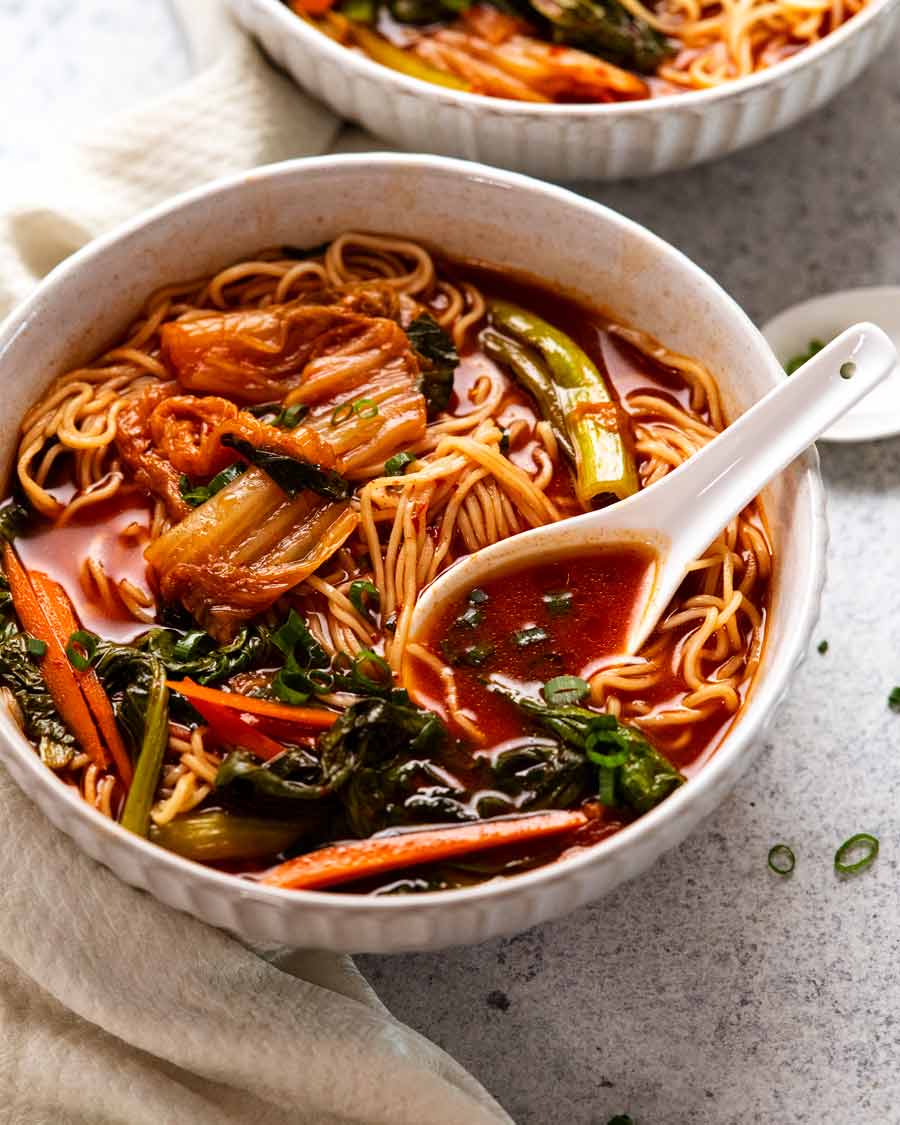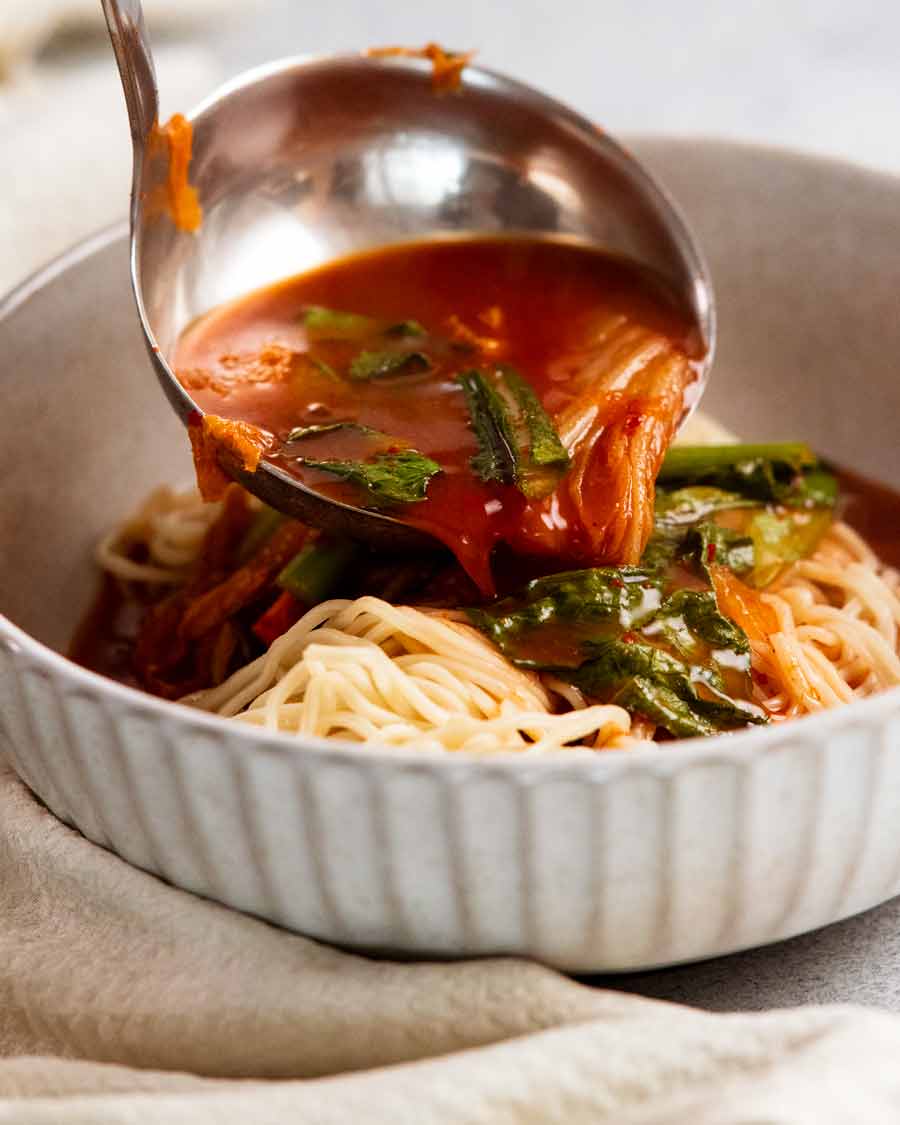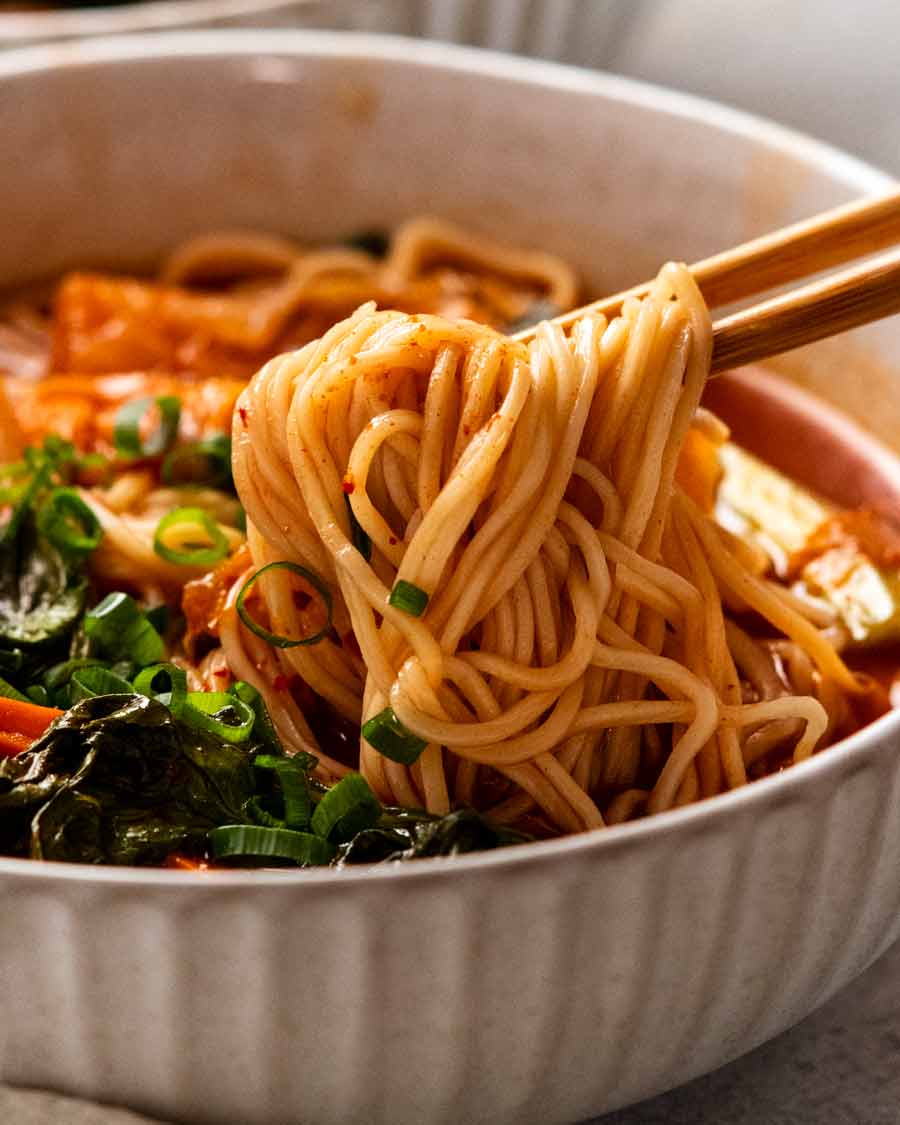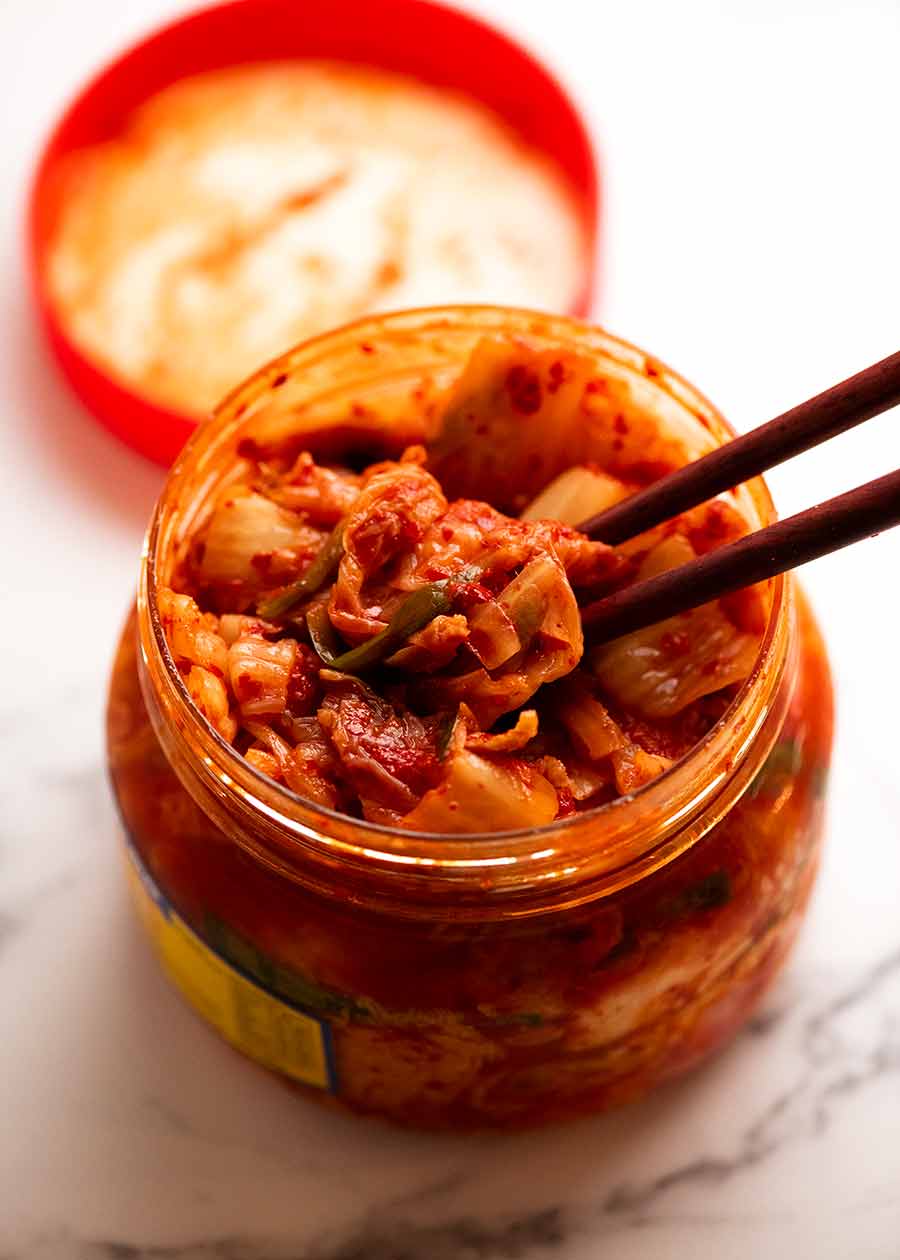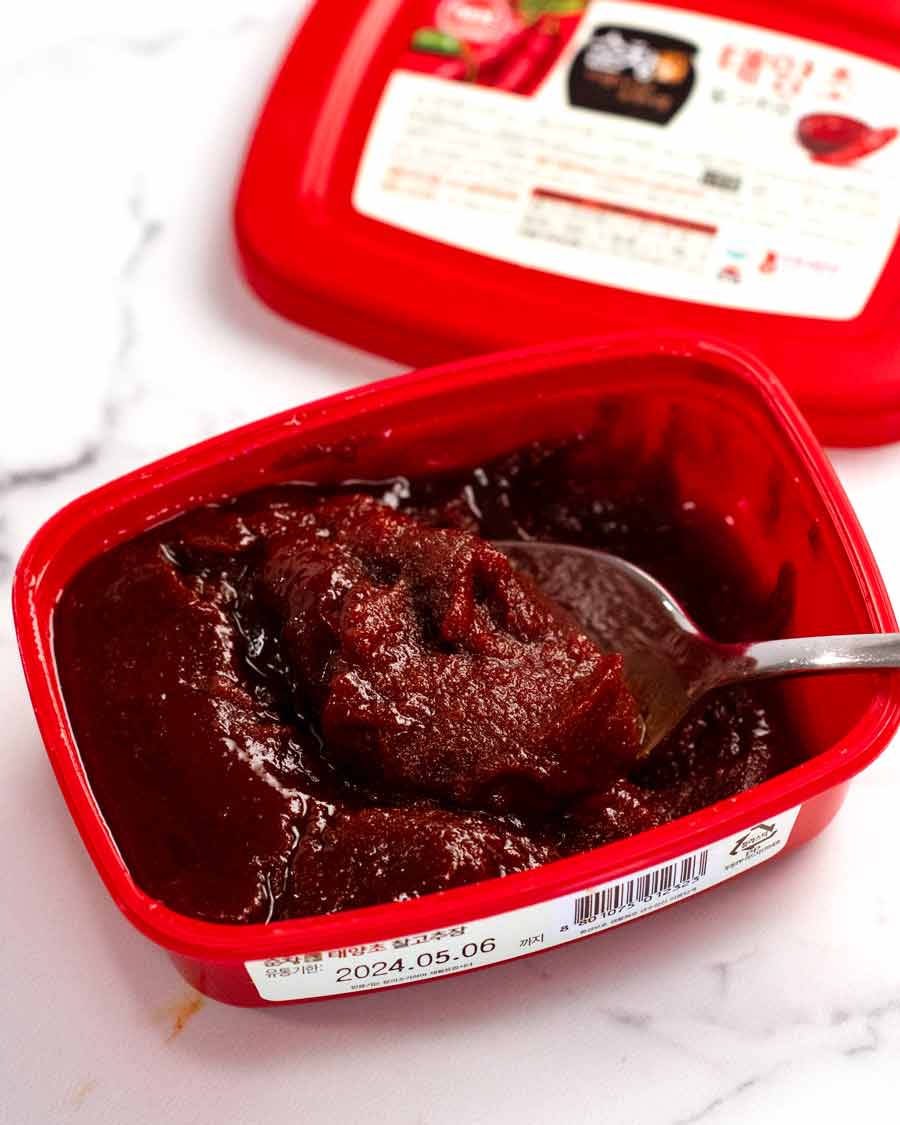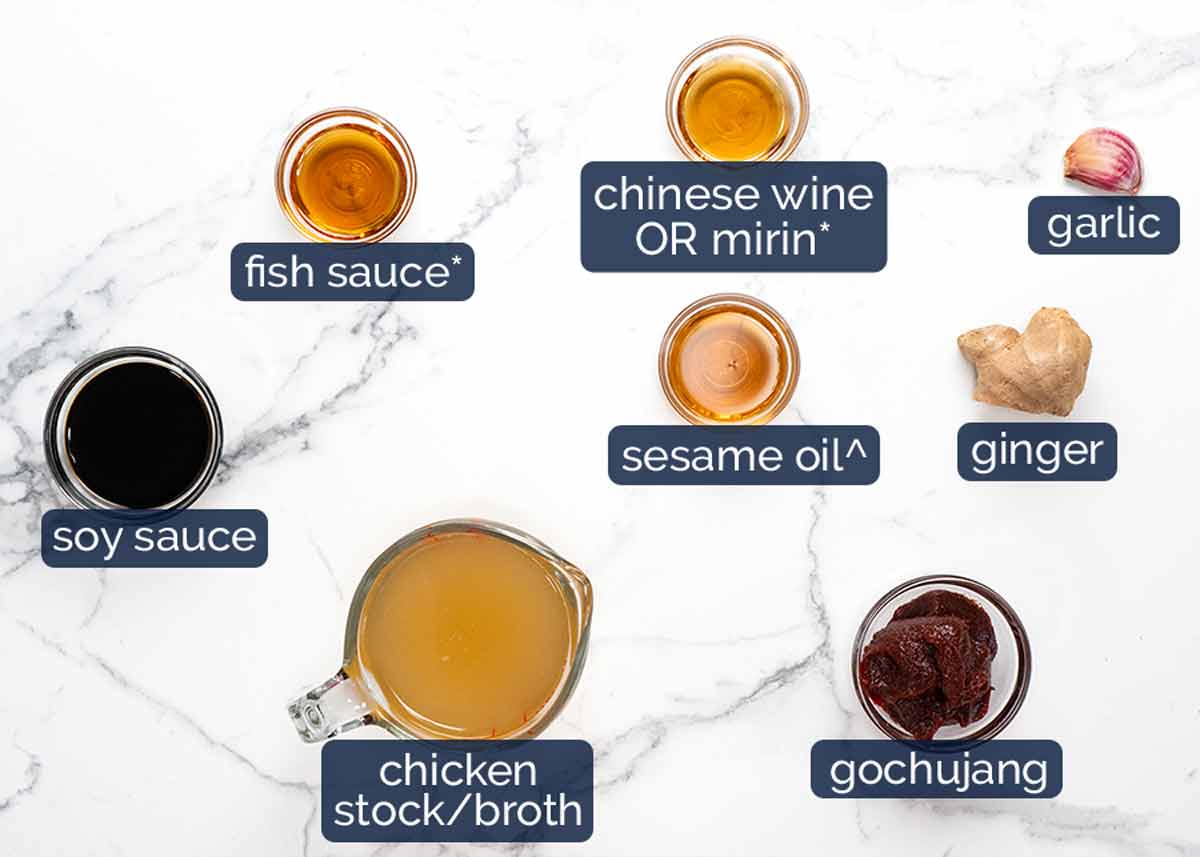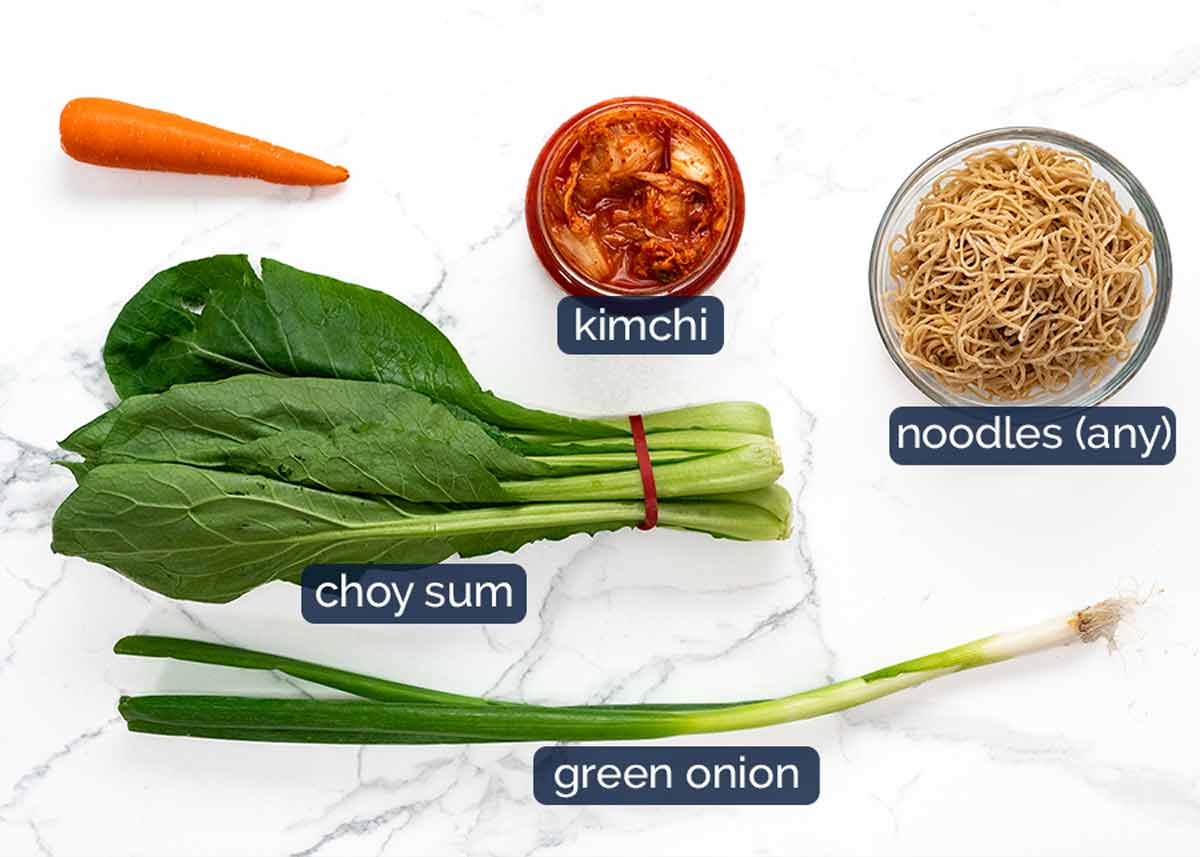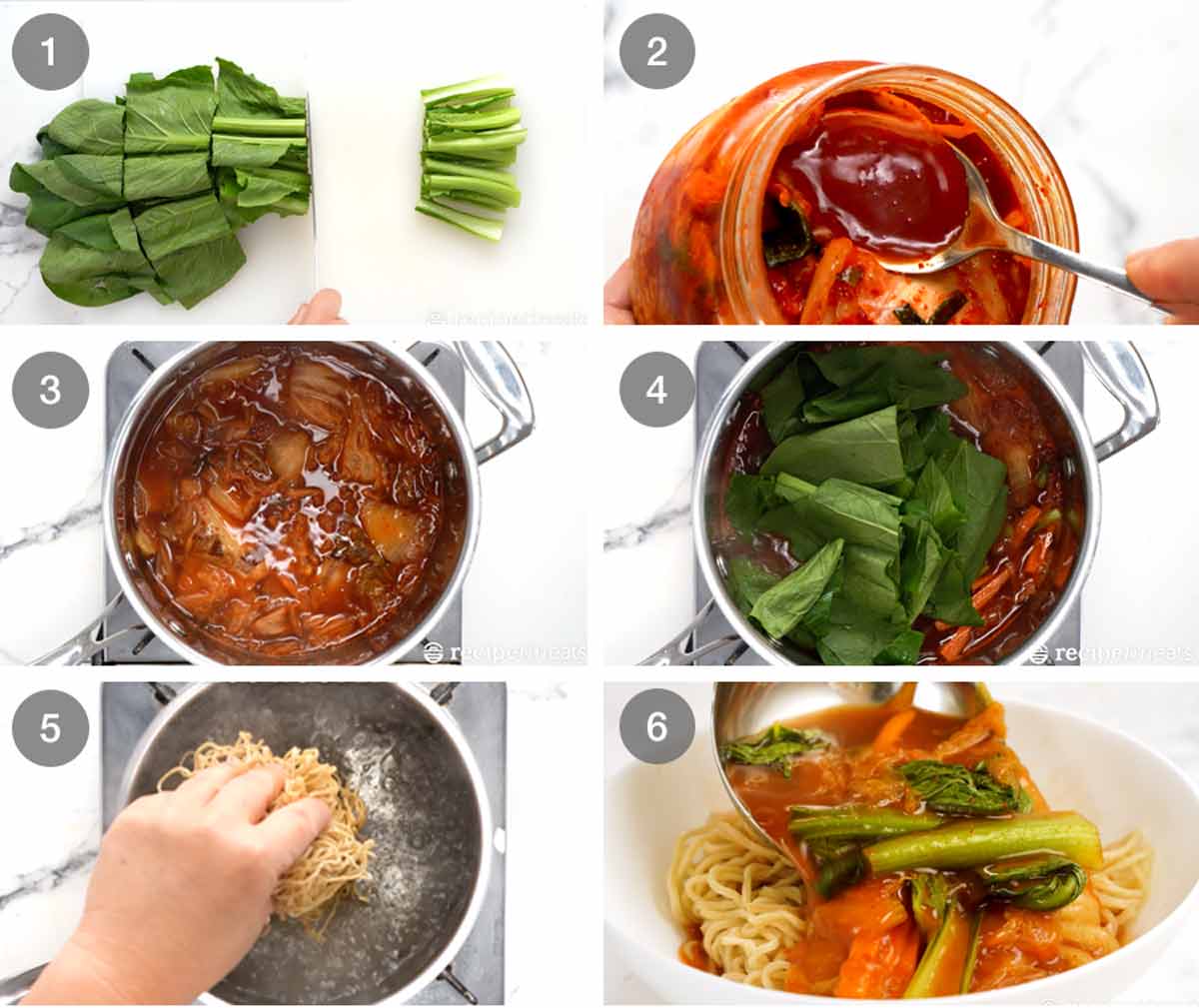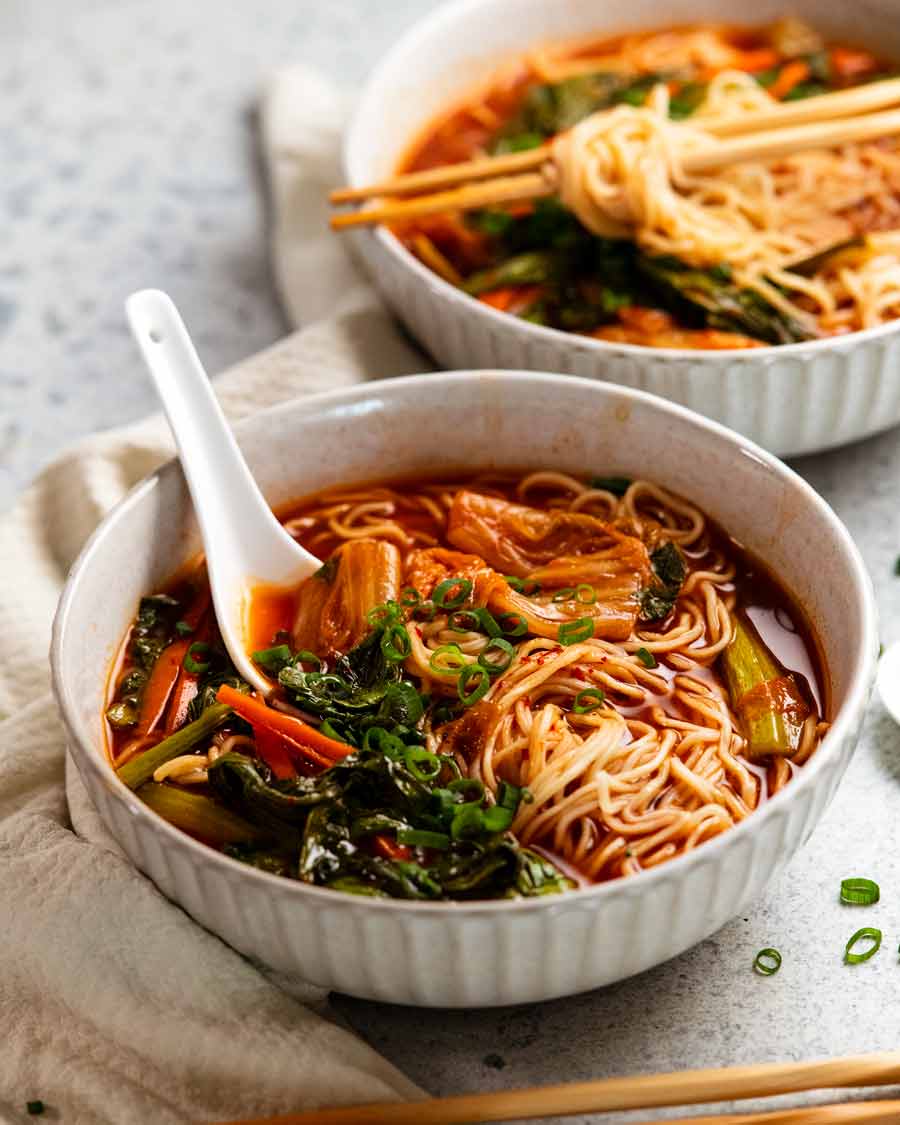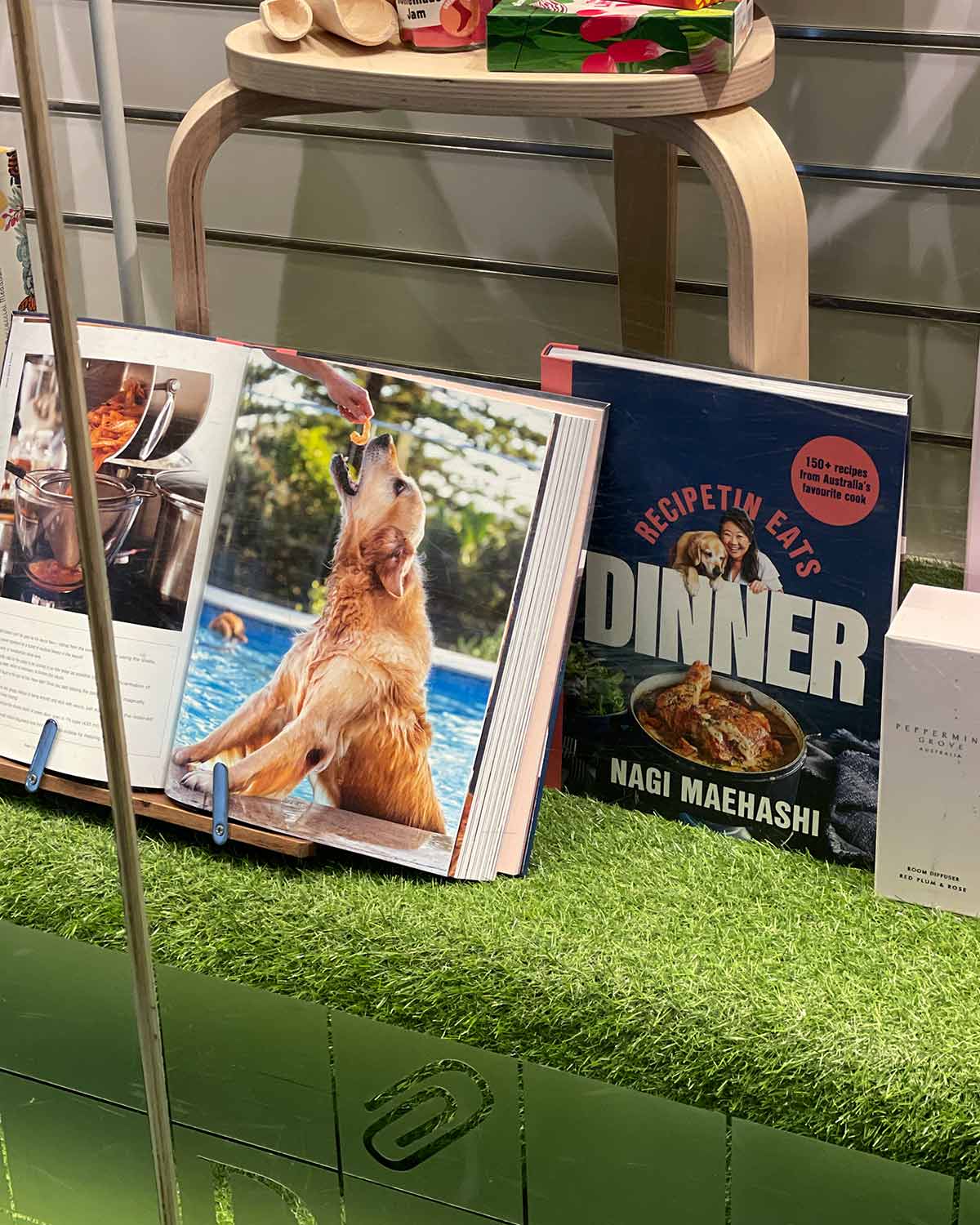Spicy Korean Noodle Soup
This is a bit of a gold nugget recipe because it’s actually quite difficult to make good spicy Asian soups. You can’t just add a squirt of chilli sauce into a classic Chinese soup broth. Well, you can, but it lacks the oomph of really good spicy Asian soups which have bold savoury flavour that compliments the spiciness. To make a great one, you typically need a mound of bones simmered for hours to make a homemade stock, a LOT of chilli oil or a deft combination of hard-to-find Asian sauces. Hence my excitement over this spicy Asian soup recipe. Especially when it passed the highest of all taste-testing-bars: my brother. Famous in our circles for his tough critique of my recipes – read the backstory in Chilli Lime Fish for entertaining proof!
Can’t handle spicy food at all? Make my Chinese Noodle Soup instead which has zero chilli it. You really can’t dial down the spiciness in this Korean noodle soup without affecting the flavour.
Key ingredients – Kimchi and Gochujang
The two key ingredients in this soup – both of which can be picked up at most everyday grocery stores – are kimchi and gochujang. Gochujang is a wickedly good Korean paste to have in your fridge – if only to make this soup over and over again!! More information below.
Kimchi is a traditional Korean pickle of fermented vegetables packed in tangy, spicy juice. The cabbage version (the most common type) is best in this soup. The cabbage acts like a mop for the sauce so you get extra flavour in the broth! Widely available in the fridge section of large grocery stores or Asian stores these days. We use both the sauce in the jar as well as the vegetables for this recipe. The sauce is loaded with flavour, don’t waste it! Add it into stir fries or Asian soups for a hit of extra salt and spiciness. Gochujang is a spicy Korean paste loaded with savory flavour. It makes an appearance regularly in my Korean recipes – including the Slow Cooked Beef Ribs in Korean BBQ Sauce which is a signature dish in my cookbook (it’s insanely easy for phenomenal results!).Readily available these days in large grocery stores (Asian aisle, not fridge) and Asian stores.
Other broth ingredients
And here are the other ingredients required for the Korean soup broth: Widely available in the fridge section of large grocery stores or Asian stores these days. We use both the sauce in the jar as well as the vegetables for this recipe. The sauce is loaded with flavour, don’t waste it! Add it into stir fries or Asian soups for a hit of extra salt and spiciness. Readily available these days in large grocery stores (Asian aisle, not fridge) and Asian stores.
Chicken stock/broth – use low sodium, else it might be too salty once all the sauces are added. Fish sauce – Adds salt into the broth, and more flavour than just plain salt and even soy sauce. Soy sauce – More salt into the broth (just using fish sauce is a little too fishy). Use either light or all purpose soy sauce. Not dark soy sauce, the flavour is too strong! More on different soy sauces here. Chinese cooking wine – or mirin or dry sherry. Just a small amount adds depth of flavour and complexity to soups and sauces. Without, you’ll notice that the soup is missing “something”. Substitute with more fish sauce (see recipe notes). Ginger and garlic – To infuse the broth with flavour.
Soup add-ins
I’ve used choy sum and carrots in this soup. But it’s one to make your own! Use whatever cookable vegetables you want.
Kimchi – As per above, we use the juices in the jar to flavour the broth as well as the cabbage. Korean spicy goodness to the max! Noodles – Use any type you want. I like using thin egg noodles for this – dried ones. But the recipe will work fine with any noodles at all, just prepare according to packet directions. Choy sum – Love using Asian greens for quick-prep recipes. So quick to chop! Plus, a good contrast of textures – some fresh crunch from the stem and floppiness from the leafy part. Feel free to substitute with other Asian greens (bok choy, gai lan/Chinese broccoli etc) Carrot – For some crunch and lovely contrasting colour! I’ve cut it into batons but if you can’t be bothered, just slice it on an angle. It really doesn’t matter. 🙂 Green onion – Fresh garnish! Optional.
How to make spicy Korean noodle soup
This recipe has a great efficient flow to it. Pour the stock into the saucepan then as it is coming up to the simmer, measure out and add the remaining ingredients into the broth. Then while the broth is simmering for 10 minutes to bring the flavours together, chop the veg and cook the noodles. Then assemble the soup bowls! This is such a gloriously quick dinner to make when you’re craving something healthy, something quick, something spicy or something slurpy – or any combination there of. 😂 It’s fabulously versatile with the add-ins: choose your own vegetables, choose your own noodles, add proteins if you want. While I encourage you to make this soup your own, I will, however, get a little strict with the soup broth! The combination and quantity of sauces is one that my team and I agreed made the tastiest soup, after going back and forth quite a few times, with a few heated “debates” thrown in. If you skip any of the sauces, it will still taste good but not as great as it is intended to be. So I really do hope you try the broth as written one of these days! And remember, you can get everything at large supermarkets here in Australia (Coles, Woolies, Harris Farms). Enjoy! – Nagi x
Watch how to make it
Life of Dozer
When you see Dozer in a window display of the flagship Dymocks bookstore that thousands of people pass by every day – who cares about the recipes in my cookbook!!?? 😂
